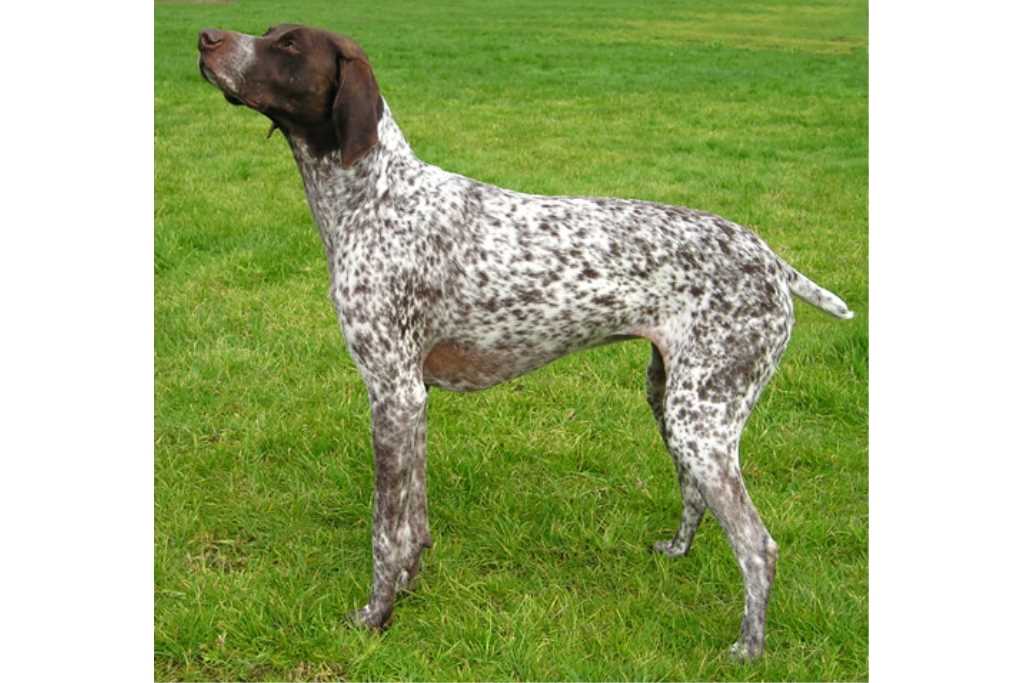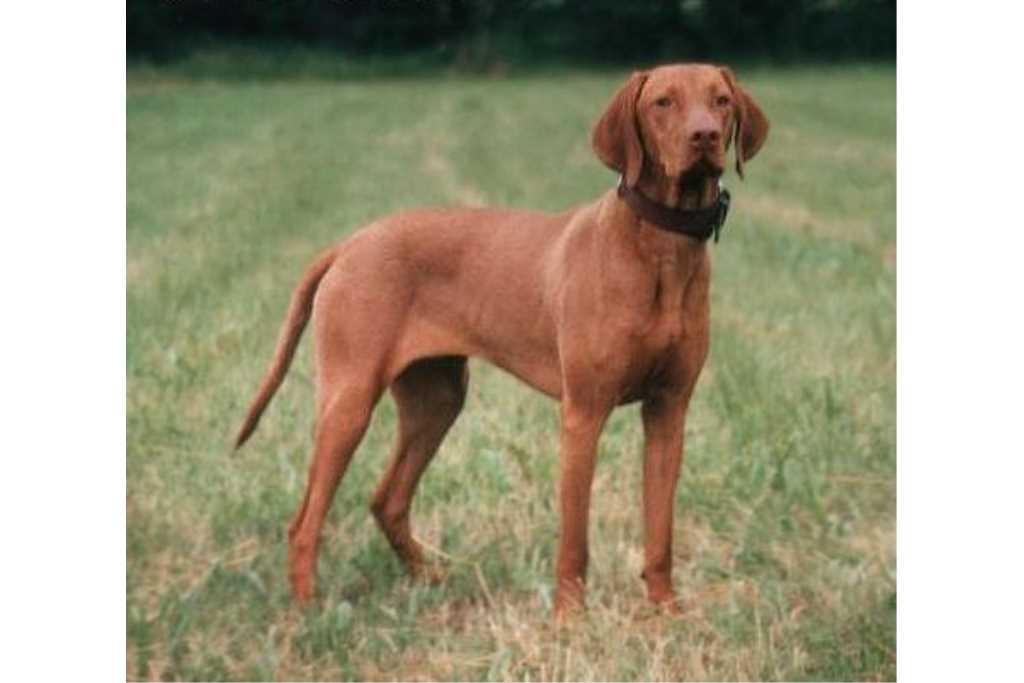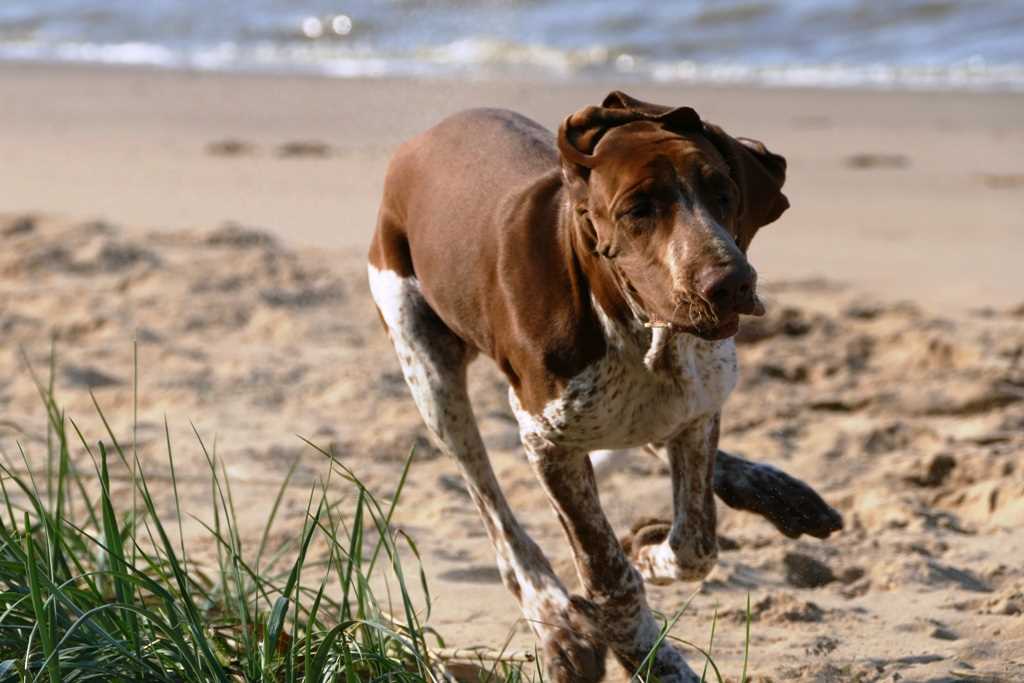The origins of the dog breed German Bracco, also called Kurzhaar, are in Germany, where there are traces of its existence since 1700. Its ancestors are European Brachii that were used in the Mediterranean countries for hunting with nets and for hunting with hawks. The introduction of the Pointer improved physical structure and olfactory skills. It was Prince Albrecht of Solms-Braunfeld who defined the criteria for the breed and therefore the basis for modern breeding in the late nineteenth century.
The German Beagle is the hunting dog par excellence, specially selected to become the perfect companion during game hunting. It seems, in fact, that the German Beagle is infallible in pointing out the game with the stop and is able to play its role even in old age. It is also very skilled in the recovery of game in water.
On the other hand, they are dogs whose hunter nature leads them to be restless and in need of daily movement and release, besides having the tendency to predominate, for which they need a precise and vigorous training, which should be started since the puppy. They are not therefore dogs suitable for everyone, and it is important to be aware that they need a precise training and to move a lot.
Besides the hunting use, it is also used for guarding, for civil protection tasks and as a companion dog.
Character of the German Beagle dog breed
The German Beagle is characterized by its balanced nature, firm nerves and is reliable. Extremely intelligent, lively and full of energy. As mentioned above, however, it needs to have a job, it needs to be able to tire itself out both physically and mentally. In fact, many breeders of this breed sell their dogs only to hunters, because this is the job of the German Bracco, hunting. He needs to run, chase, run here and there non-stop and only when he is duly occupied is he a very friendly dog, a lover of family and home, otherwise he is destructive both in the house and in the garden.
Living in an apartment is against his nature: the ideal for him is a house with a garden, better if in the countryside. It becomes very attached to its owner, whose proximity it often requires. If properly socialized as a child, he has no problems relating to other dogs, while with cats it is more difficult as he sees them as prey. With strangers it is neither fearful nor aggressive, but if it senses danger it is an excellent watchdog.
Training is of vital importance for this breed, and is to be started from puppyhood. It is a dog that as an adult has a certain size and strength and therefore would not be easy to manage. It is important to make it clear right away who is in charge and not let it impose its leadership.
Appearance of the German Beagle dog breed
The German Beagle is a medium to large dog, its height at the withers can reach 66 centimeters with a weight of 30 kilogrammes and more. It is robust and muscular, but has an elegant bearing and a slender physique, in fact it is an aristocratic dog, harmoniously proportioned, whose construction ensures power, endurance and speed. It has a powerful bone structure and good musculature that allows it to be fast, strong and resistant.
The legs are long and strongly muscled, with broad, hard pads; the tail is thick at the base but narrows toward the end, not long, but streamlined.
The head is neither too light nor too heavy, well proportioned to the shape of the body. The muzzle is long and strong, suitable for gripping game. The ears are of medium size and, attached high, fall flat along the head, without curvature. The eyes, very large, are usually dark brown, very lively and expressive.
The coat is short and sparse, hard to the touch, thick and shiny. The most common color is brown with or without white spots and shades. The head is brown, roan, black or white with brown spots.
Care and Health of the German Beagle Dog Breed
The German Beagle is a strong dog with robust health and an average life expectancy of around 10-12 years. However, it can suffer from hereditary diseases such as hip dysplasia, retinal atrophy and bullous epidermolysis. It can also be prone to epilepsy. But generally buying the German Bracco from a good breeder, greatly reduces these pathologies.
It is a very active dog, so it is advisable that it eats twice a day, morning and evening, and not to stimulate it after eating, because this can lead to the overturning of the stomach. As for the diet, it must be balanced and it is not a dog that tends to obesity, as long as it makes movement.
As for the maintenance of the hair, this requires very little attention, just brush it every so often. It does not lose much fur.


